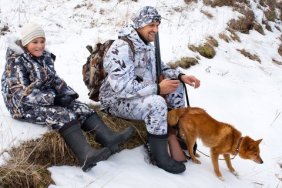 Whether you are buying, scouting or leasing deer hunting property, there are some key pieces of evidence that you will need to find that will determine how productive your land will be during hunting season.
Whether you are buying, scouting or leasing deer hunting property, there are some key pieces of evidence that you will need to find that will determine how productive your land will be during hunting season.
Sheds
There is nothing more exciting than finding shed deer antlers. These discarded treasures of nature are the ultimate proof that deer have been on your property. Sheds can tell you how many wintering bucks are around, give you an idea of the quality of your deer and also let you know what deer survived hunting season.
Depending on what region you hunt in, rodents can eat sheds faster than they can drop so you need to be out looking for them way before spring arrives. The best take away from finding sheds is knowing that your land has the desirable features that deer are drawn to. Sheds are a good thing.
Rubs
Much like sheds, rubs are a sure sign that active bucks are on your land. Unlike sheds, it also means that bucks will most likely be found on your land during hunting season. Rubs can be found on small saplings, fence posts, power poles, and even the corners of old barns.
More often than not, rubs are made before the rut as testosterone drives deer to build muscle and practice sparring moves. Contrary to traditional beliefs, the size of the rub does not determine the size of the buck. I have seen spikes rubbing on 12 inch tree trunks and I have to say, it was a disappointment discovering that fact.
Rubs are also good spots to set up game cameras. Even better, if you can find a community rub, you can catch multiple bucks visiting the rub at all times of the day. These community rubs are a special treat. The majority of the ones I have found are located on soft wood trees. If you can find rubs, then you can use them to get a preview of what’s to come.
Scrapes
Scrapes are the ultimate evidence of actual rutting residence bucks. If you are finding scrapes, you are finding proof that mature bucks are actually on the property and will most likely be staying there. Although it is common to see young deer playing in scrapes, most scrapes originate from mature bucks pawing the ground and licking head-high branches. Some hunters like to set up stands overlooking scrapes, but I have found better results hunting about 60 yards downwind of active scrapes as most big boys scent check scrapes rather than visiting them in person.








